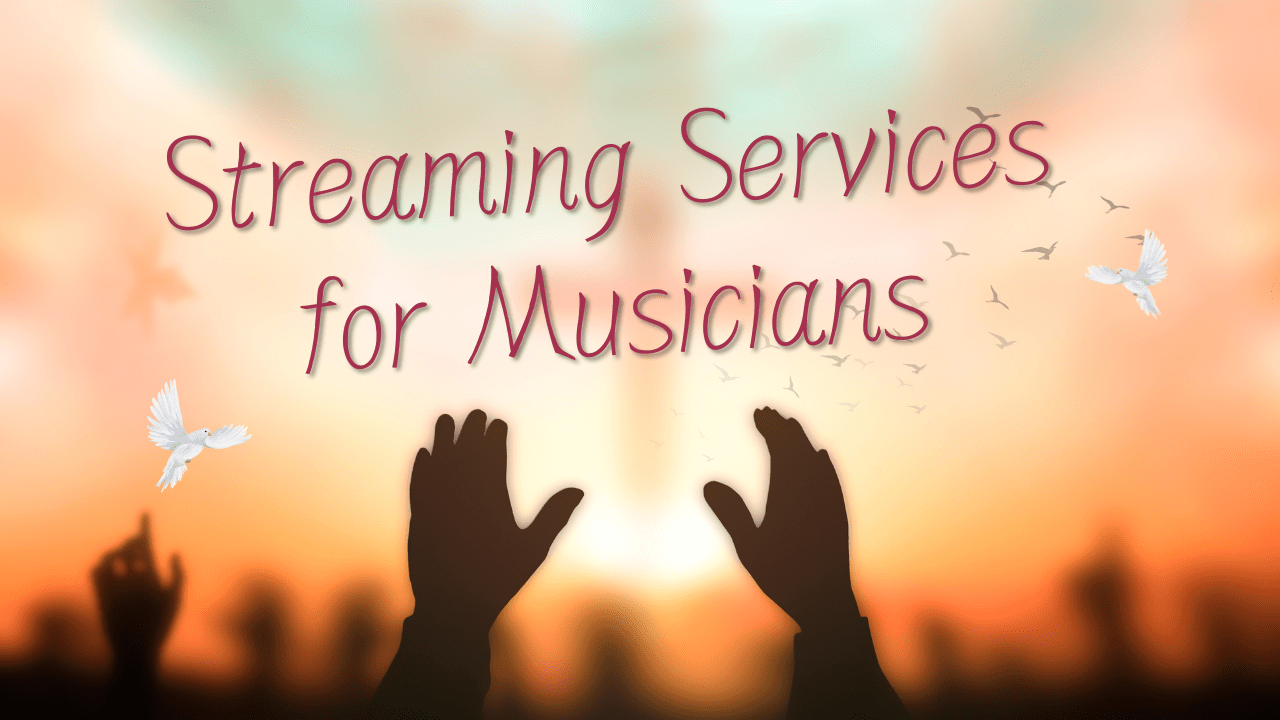In the digital era, streaming services have become a game-changer for musicians looking to distribute their music and reach a global audience. With millions of listeners streaming daily, platforms like Spotify, Apple Music, and YouTube Music have revolutionized how artists share their work. These services provide more than just a space for music playback—they offer analytics, promotional tools, and monetization options that were unimaginable a decade ago.
This guide dives deep into everything you need to know about streaming services for musicians. Whether you’re an emerging artist or a seasoned performer, understanding how these platforms work can significantly impact your music career.
What Are Streaming Services for Musicians?
Streaming services for musicians are platforms that allow artists to distribute their music globally via the internet. Unlike traditional methods that require physical distribution (like CDs or vinyl), streaming services use digital technology to make music accessible to anyone with an internet connection. This model eliminates the need for downloads, as music is played directly from the platform’s servers.
Popular Streaming Platforms
- Spotify: Known for its vast music library and robust features for artists, Spotify allows musicians to build playlists, interact with fans, and track analytics.
- Apple Music: Integrated with the Apple ecosystem, Apple Music is known for its high-quality audio and exclusive content deals, making it a premium choice for artists and listeners alike.
- YouTube Music: Leveraging the popularity of YouTube, this platform combines video and music streaming, offering a unique space for music videos, live performances, and fan engagement.
- Amazon Music: Gaining traction due to its seamless integration with Amazon’s other services, Amazon Music offers various subscription tiers and high-quality audio options.
- Tidal: Focused on high-fidelity sound and exclusive content, Tidal is ideal for audiophiles and artists who want to offer their fans the best listening experience possible.
These platforms are essential tools for artists aiming to grow their audience and enhance their streams, but they each have unique features that cater to different aspects of music distribution and promotion.
The Importance of Streaming Services for Musicians
1. Global Reach and Accessibility
One of the biggest advantages of streaming services for musicians is the ability to reach a global audience without significant upfront costs. With physical distribution, getting music to international markets was costly and logistically challenging. Streaming services remove these barriers, allowing musicians to share their music with millions of listeners worldwide, from the comfort of their homes.
2. Diversified Revenue Streams
Streaming services provide a critical revenue stream for musicians through royalties. Each stream of a song generates a small payout, which, while modest on a per-stream basis, can add up to significant earnings with high play counts. Moreover, platforms like Spotify offer different monetization avenues, including premium subscriptions and exclusive content offerings.
3. Data-Driven Insights and Analytics
A significant benefit of streaming services for musicians is access to data and analytics. These platforms provide artists with detailed insights into their audience’s listening habits, including which songs are most popular, where listeners are located, and how often they listen. This data is invaluable for crafting marketing strategies and understanding which types of content resonate most with audiences.
For example, Spotify for Artists provides tools to view real-time listening stats, track playlist placements, and analyze demographic information about listeners. This allows artists to make data-driven decisions and tailor their promotional efforts accordingly.
4. Marketing and Promotion Tools
Streaming services offer numerous tools for promoting music. Features like Spotify’s playlist pitching, YouTube’s video premieres, and Apple Music’s exclusive releases help artists generate buzz and attract more listeners. Spotify’s countdown pages, for instance, allow artists to build anticipation for new releases by offering a sneak peek or pre-save option to their fans.
These tools are designed to enhance visibility on the platform and keep fans engaged, ultimately driving more streams and increasing revenue.
5. Fan Engagement and Community Building
Engaging with fans is easier than ever with streaming services for musicians. Platforms like Spotify and YouTube allow artists to create and share playlists, behind-the-scenes content, and exclusive videos, fostering a deeper connection with their audience. Apple Music even offers integrated social features where fans can follow their favorite artists and see updates directly from them.
Building a community around your music not only helps in retaining current listeners but also in converting casual listeners into dedicated fans.
How to Make the Most of Streaming Services for Musicians
To fully leverage streaming services for musicians, it’s crucial to understand and utilize the various tools and features these platforms offer. Here are steps to help you make the most out of your streaming journey:
1. Choose the Right Platform for Your Music
Not all streaming services are created equal. Some cater more to certain genres or types of artists, while others might offer better revenue opportunities. For instance, if your audience primarily uses Apple devices, Apple Music might be the best platform for you. Conversely, if your focus is on global reach and discoverability, Spotify might be the way to go. Understanding the unique offerings of each service will help you make the best choice.
2. Optimize Your Artist Profile
Your artist profile is your digital identity on streaming platforms. It’s the first impression new listeners will have, so make it count. Ensure your profile is complete with a compelling bio, high-quality images, and links to your social media and website. Keep your profile updated with your latest releases, tour dates, and exclusive content to keep fans engaged and informed.
3. Produce High-Quality Music Content
High-quality music is non-negotiable in the digital streaming era. Invest in good recording equipment or work with professional studios to ensure your music sounds its best. Additionally, consider producing various types of content, including acoustic versions, remixes, or live recordings, to keep your listeners engaged and show different sides of your artistry.
4. Leverage Platform-Specific Features
Each streaming service offers unique features that can help promote your music. For example, Spotify allows artists to pitch songs to curated playlists, which can significantly increase streams and exposure. Apple Music’s editorial playlists and YouTube’s premieres and live streams also offer valuable promotional opportunities. Utilizing these features effectively can help you stand out in a crowded market.
5. Engage Actively with Your Audience
Building a loyal fanbase requires consistent and meaningful engagement. Use social media and streaming platforms to interact with your fans regularly. Respond to comments, share exclusive content, and even consider hosting live Q&A sessions or virtual concerts to deepen your connection with your audience.
6. Collaborate with Other Artists
Collaborations are a great way to reach new audiences and gain credibility in the industry. Consider collaborating with artists in similar genres or with complementary styles. Joint releases, features, and even simple social media shoutouts can introduce your music to new listener bases and boost your streams.
Advanced Tips for Success on Streaming Services for Musicians
As you become more comfortable with streaming platforms, consider employing advanced strategies to further boost your success:
1. Consistent Content Releases
Regularly releasing new content is key to maintaining visibility on streaming platforms. Consider developing a content calendar that includes not only new music releases but also behind-the-scenes videos, lyric breakdowns, or artist interviews. This steady stream of content will keep your audience engaged and eager for more.
2. Utilize Data to Refine Your Strategy
Use the data provided by streaming services to refine your strategy continually. Look for patterns in which songs perform best, identify demographic trends, and use this information to plan future releases and marketing efforts. For instance, if a particular city or region streams your music more, consider focusing your advertising efforts there or planning a tour stop.
3. Experiment with Different Formats
Don’t be afraid to experiment with different music formats and styles. Try releasing acoustic versions, remixes, or live recordings. Offering a variety of content keeps your existing fans engaged and attracts new listeners who may have different musical tastes.
4. Invest in Professional Promotion
Consider investing in professional promotion to boost your music’s reach. Many independent agencies specialize in music promotion and can help pitch your songs to playlists, radio stations, and influencers. This investment can significantly increase your streams and help you build a broader audience.
5. Stay Updated with Platform Changes
Streaming platforms frequently update their algorithms and features, which can impact how music is recommended and discovered. Stay updated on these changes by regularly checking official announcements from the platforms and participating in artist forums. Adjust your strategy as needed to ensure your music remains visible and accessible.
Challenges in Using Streaming Services for Musicians
While streaming services offer numerous benefits, they also come with challenges:
1. Low Per-Stream Revenue
One of the biggest challenges for musicians using streaming services is the relatively low payout per stream. This can be particularly challenging for independent artists without a large following. It’s essential to consider additional revenue streams, such as live performances, merchandise, and fan subscriptions, to supplement streaming income.
2. Overwhelming Competition
The sheer volume of music available on streaming platforms means competition is fierce. Standing out in a crowded field requires not only high-quality music but also a strong promotional strategy and consistent engagement with fans.
3. Algorithm Dependence
Streaming services rely heavily on algorithms to recommend music to listeners. Changes to these algorithms can significantly impact an artist’s visibility on the platform. Artists must stay informed about these changes and adapt their strategies accordingly to maintain their audience.
The Future of Streaming Services for Musicians
Looking ahead, the future of streaming services for musicians appears bright. Technological advancements and new features are continually being introduced, offering even more opportunities for artists to succeed. For example, Spotify’s recent launch of Countdown Pages allows artists to build anticipation for new releases and track pre-save stats, which can be a game-changer for generating early interest and engagement.
Moreover, as platforms begin to integrate more social features and explore new content formats like podcasts and video, musicians have even more avenues to connect with fans and build their brand.
Conclusion
Streaming services for musicians have reshaped the music industry, providing unprecedented access to global audiences and new monetization opportunities. By understanding the features and tools these platforms offer and employing strategic approaches to maximize their benefits, artists can significantly grow their reach and boost their earnings.
Whether you’re a new artist looking to make a mark or an established performer aiming to expand your fanbase, streaming services offer invaluable tools to achieve your goals. Embrace the digital age of music, utilize these platforms to their fullest, and watch your music career flourish.
For further reading, explore these related articles:
- Understanding Synchronization Licenses: A Comprehensive Guide for Musicians
- How the Music Industry Works?
- 5 Music Myths You Need To Leave Behind
For additional resources on music marketing and distribution, visit Deliver My Tune.






